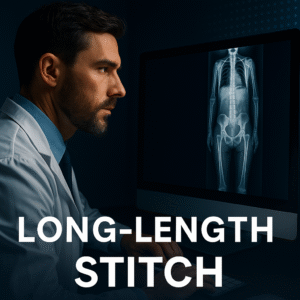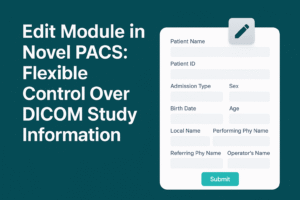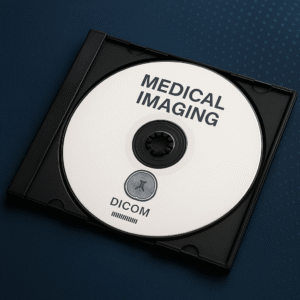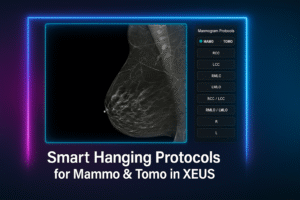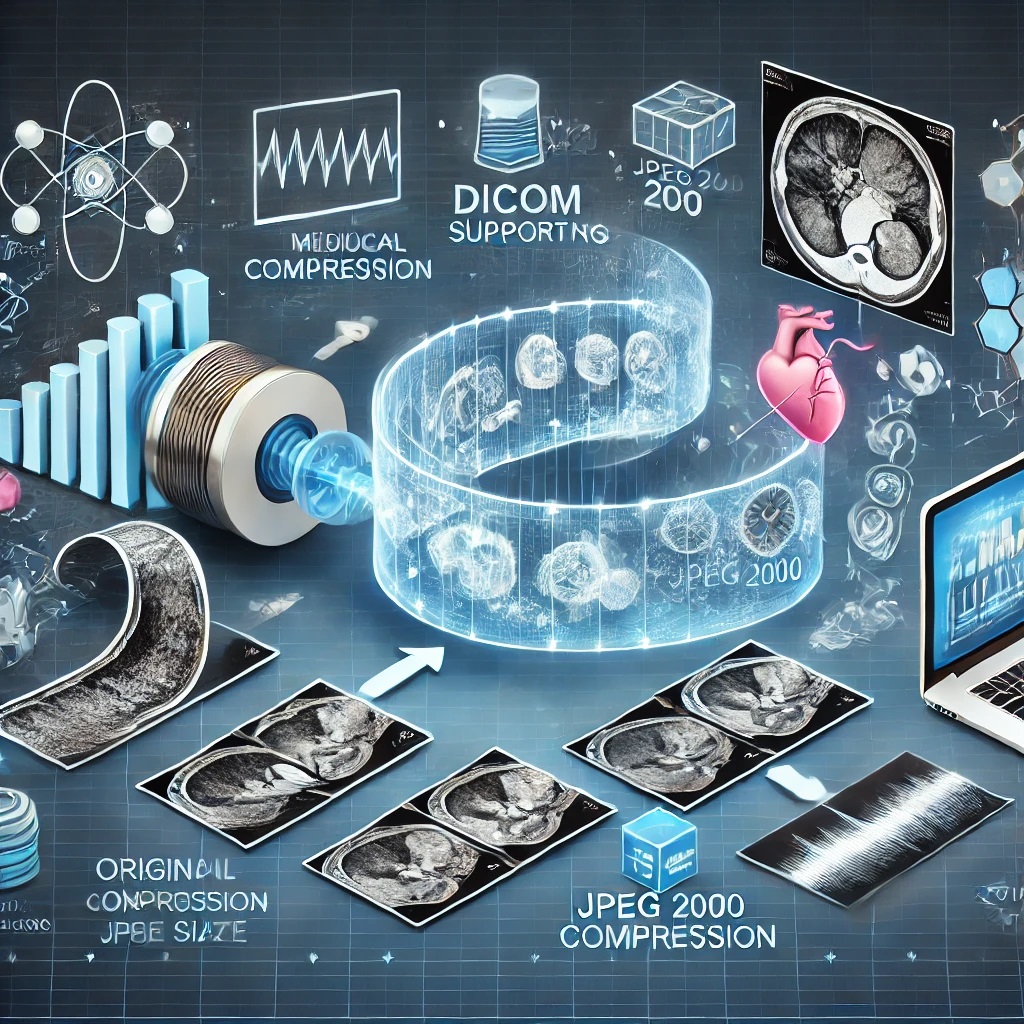In the realm of medical imaging, managing the vast amounts of data generated by modalities like MRI, CT, and X-ray is a significant challenge. The need to store, transmit, and retrieve high-quality images efficiently has led to the development of various compression algorithms. Among these, JPEG 2000 stands out as a crucial tool for ensuring that image quality is maintained while reducing file size. This blog post will explore the different compression algorithms supported by DICOM, with a particular focus on JPEG 2000, and how these algorithms achieve the delicate balance between file size reduction and image quality preservation.
The Importance of Compression in Medical Imaging
Medical images are typically large files, especially with the advent of high-resolution imaging technologies. Without compression, storing and transmitting these images would be both costly and time-consuming. Compression algorithms help to reduce the file size of images, making it easier to store and transmit them without sacrificing the necessary detail required for accurate diagnosis.
DICOM, the standard for medical imaging and communication, supports a range of compression algorithms, each with its own strengths and applications. These algorithms are designed to ensure that the integrity of the image is preserved, allowing healthcare professionals to make accurate assessments based on the data.
Compression Algorithms Supported by DICOM
-
Lossless Compression
Lossless compression algorithms reduce the file size of an image without any loss of information. This means that the original image can be perfectly reconstructed from the compressed data. DICOM supports several lossless compression algorithms, including:
-
JPEG Lossless (Process 14): This algorithm uses a predictive coding model to achieve compression. It is widely used in medical imaging because it ensures that no information is lost, making it suitable for images where every detail is critical.
-
Run-Length Encoding (RLE): This is a simple form of lossless compression that works by identifying sequences of identical data values and encoding them as a single value and count. While not as commonly used in medical imaging, it is supported by DICOM for certain types of data.
-
Lempel-Ziv-Welch (LZW): LZW is another lossless compression algorithm that works by identifying repeated sequences of data and replacing them with shorter codes. It is effective for certain types of medical images, particularly those with large areas of uniform color.
-
-
Lossy Compression
Lossy compression algorithms reduce the file size of an image by discarding some of the image data. While this results in a smaller file size, it also means that some detail is lost, which can impact the quality of the image. However, when used appropriately, lossy compression can significantly reduce file sizes while maintaining sufficient image quality for diagnostic purposes. DICOM supports several lossy compression algorithms, including:
-
JPEG Baseline (Process 1): This is the most commonly used lossy compression algorithm and is widely supported across different platforms. It achieves compression by discarding less critical data, which can lead to a noticeable loss in image quality, particularly at higher compression levels. However, for certain types of images, the trade-off between file size and quality is acceptable.
-
JPEG 2000 (Lossy and Lossless): JPEG 2000 is a highly advanced compression algorithm that can operate in both lossy and lossless modes. Unlike traditional JPEG, JPEG 2000 uses wavelet compression, which allows for more efficient compression with less noticeable loss of quality. This makes it an ideal choice for medical imaging, where maintaining image integrity is crucial.
-
JPEG 2000: A Game Changer in Medical Imaging
JPEG 2000 is one of the most significant advancements in medical image compression. It offers several advantages over traditional JPEG compression, making it particularly well-suited for use in DICOM.
-
Unlike the discrete cosine transform (DCT) used in traditional JPEG, JPEG 2000 uses a wavelet transform. This allows JPEG 2000 to compress images more efficiently, resulting in smaller file sizes without sacrificing as much quality. The wavelet transform also enables progressive transmission, meaning that an image can be viewed at lower resolutions while it is still being transmitted or loaded, which can be beneficial in medical applications where quick access to images is needed.
-
Lossy and Lossless Compression
One of the key features of JPEG 2000 is its ability to perform both lossy and lossless compression. This flexibility allows healthcare providers to choose the appropriate level of compression based on the specific requirements of the image and the clinical scenario. For example, a lossless compression might be used for images where every detail is crucial, while lossy compression might be used for images where some quality can be sacrificed to save space.
-
Error Resilience
JPEG 2000 includes built-in error resilience features, which help protect the integrity of the image data during transmission. This is particularly important in medical imaging, where even small errors can lead to misdiagnosis. The error resilience features of JPEG 2000 ensure that the image can be recovered even if some of the data is corrupted during transmission.
-
Scalability
JPEG 2000 supports scalable coding, which means that an image can be compressed once and then decoded at different quality levels. This allows for more efficient storage and transmission, as a single compressed image can be used in multiple scenarios, from quick previews to detailed analysis. In a DICOM context, this scalability can be particularly useful, as it allows images to be stored in a way that maximizes efficiency while still meeting the needs of different clinical applications.
-
Superior Image Quality
Perhaps the most significant advantage of JPEG 2000 over traditional JPEG is its superior image quality at higher compression ratios. This is achieved through the wavelet compression technique, which provides better preservation of image details, particularly at the edges and in areas of fine texture. This makes JPEG 2000 particularly well-suited for medical imaging, where the clarity and detail of an image are paramount.
How JPEG 2000 Works in DICOM
In the DICOM standard, JPEG 2000 is used to compress images in a way that is both efficient and preserves the diagnostic quality of the images. The integration of JPEG 2000 into DICOM allows for the storage and transmission of high-quality images with reduced file sizes, making it easier to manage large datasets.
DICOM specifies the use of JPEG 2000 in both lossless and lossy modes, depending on the requirements of the application. For example, lossless JPEG 2000 might be used for primary diagnostic images, where every detail is critical, while lossy JPEG 2000 might be used for images that are used for reference or in educational settings.
The use of JPEG 2000 in DICOM also facilitates the sharing of images across different systems and platforms, as the compression standard is widely supported and recognized. This interoperability is a key feature of DICOM and is essential for the efficient exchange of medical images in a modern healthcare environment.
The Future of Compression in DICOM
As medical imaging technology continues to advance, the need for efficient and effective compression algorithms will only grow. JPEG 2000 is likely to remain a key part of the DICOM standard for the foreseeable future, thanks to its combination of efficiency, flexibility, and image quality.
However, as new imaging technologies and modalities emerge, there may be a need for further innovation in compression algorithms. Future developments in DICOM may include support for even more advanced compression techniques, as well as improvements in the way that images are stored, transmitted, and accessed.
In upcoming blog posts, we will delve deeper into other aspects of DICOM, including the networking protocols that enable the transmission of DICOM data across different systems, and the role of DICOMweb in bringing DICOM into the cloud era. These topics will further illustrate the importance of DICOM in modern healthcare and the ways in which it continues to evolve to meet the needs of the industry.
Conclusion
Compression algorithms play a vital role in the efficient management of medical images, and DICOM’s support for these algorithms is a key factor in its success as a standard. JPEG 2000, with its advanced wavelet compression, flexible lossless and lossy modes, and superior image quality, is a standout choice for medical imaging compression.
Understanding the role of JPEG 2000 and other compression algorithms in DICOM is essential for anyone involved in medical imaging. As technology continues to evolve, staying informed about these developments will be crucial for ensuring that medical images can be stored, transmitted, and accessed in the most efficient and effective way possible.
Stay tuned for our future posts, where we will explore DICOM Networking Protocols and DICOMweb, and how they are shaping the future of medical imaging.

